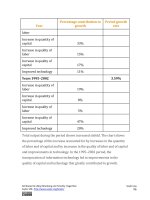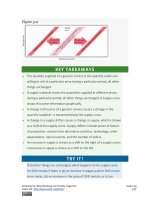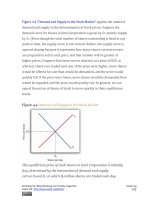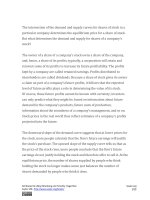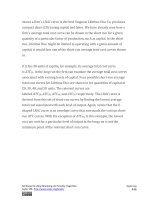Authors libby rittenberg 858
Bạn đang xem bản rút gọn của tài liệu. Xem và tải ngay bản đầy đủ của tài liệu tại đây (383.27 KB, 1 trang )
example, producers of semiconductors were allowed to form a research
consortium, Sematech, in order to promote the U.S. semiconductor
industry. This type of joint venture was formerly prohibited. Sematech has
since created the International Sematech Manufacturing Initiative (ISMI), a
wholly owned subsidiary dedicated to improve the productivity and cost
performance of equipment and manufacturing operations well beyond a
narrowly defined semiconductor industry. Its membership includes both
domestic and foreign firms, and they collectively represent half of the
world’s integrated circuit (semiconductor and microchip) production. In
this case, we see the U.S. government is supporting cooperation among
multinational and international firms ostensibly for product improvement.
One suspects, however, that member firms gain a competitive advantage
over non-member firms wherever in the world they are located.
Antitrust Policy and U.S. Competitiveness
In the 1980s Congress passed several laws that relaxed the antitrust
prohibition against cooperation among U.S. firms, including the National
Cooperative Research Act of 1984 (NCRA) and the Omnibus Trade and
Competitiveness Act (OTCA).
The NCRA provided a simple registration procedure for joint ventures in
R&D. The NCRA protects members of registered joint ventures from
punitive antitrust penalties if the venture is later found to illegally reduce
competition or otherwise act in restraint of trade. Between 1984 and 1990
over 200 research joint ventures were registered, substantially more than
were formed over the same period within the EC.
Attributed to Libby Rittenberg and Timothy Tregarthen
Saylor URL: />
Saylor.org
858
